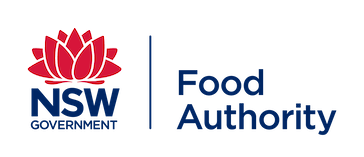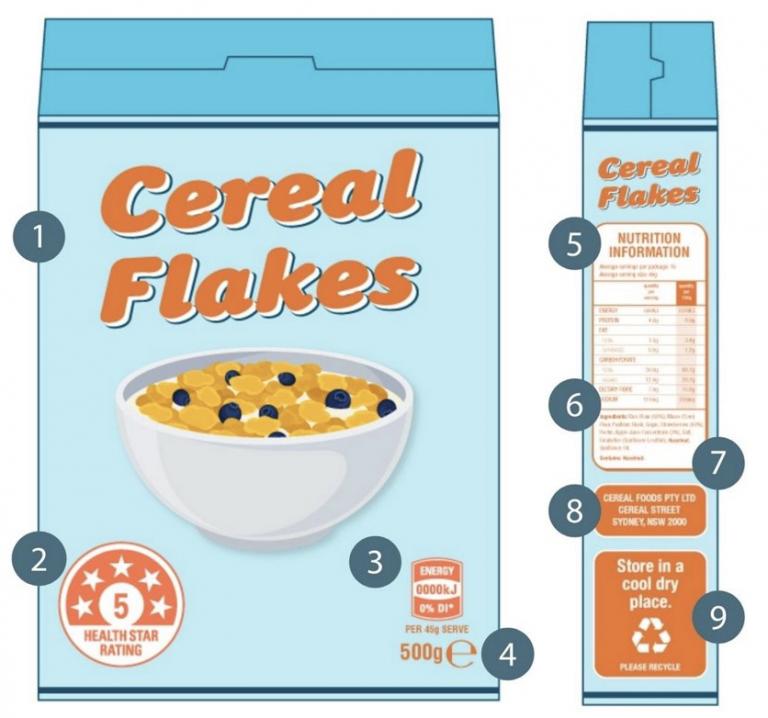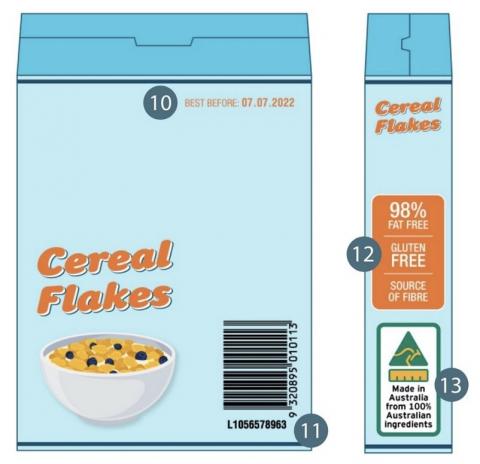What's on a food label
 Food name
Food name
The name of a food must be sufficient to indicate its true nature. For example, ‘fruit yoghurt’ should contain fruit. If it is fruit flavouring, the product should say ‘fruit flavoured yoghurt’. For more visit FSANZ.
Australia New Zealand Food Standards Code - Standard 1.2.2 - Information requirements – food identification
 Health Star Rating
Health Star Rating
Health Star Rating is a nutrition information system (1/2 to 5 stars) for the front of packaged food to help you make informed food choices.
 % daily intake
% daily intake
% daily intake (DI) states the total energy, protein, fat, saturated fat, carbohydrate, sugars, dietary fibre and sodium in a single serve per day for an ‘average’ adult on an 8700 kJ diet that follows national dietary guidelines. Stating the DI is voluntary.
% recommended daily intake (RDI) information specifically applies to vitamins and minerals and must be provided if a nutrition claim is made about a vitamin or mineral that has an RDI.
See the Australian Dietary Guidelines on the Department of Health website
 Weights and measures
Weights and measures
A food label must contain accurate weights and measures information for the quantity of food. The Australian Government National Measurement Institute regulates this area.
 Nutrition information
Nutrition information
The nutrition information panel (NIP) lists key nutrients so consumers can keep track of what they’re eating and serving sizes, and decide between products. Some labels also display % daily intake and nutrition or health claims. For more visit FSANZ
Australia New Zealand Food Standards Code – Standard 1.2.8 – Nutrition information requirements
 Ingredients
Ingredients
Ingredients must be listed in order by weight, with the largest ingredient first. The sub-ingredients of compound ingredients must also be listed and declared if they require a mandatory declaration, such as allergens. If the compound makes up 5% or more of the product, all sub-ingredients must be listed.
All allergens must be declared no matter how small the amount.
Warning or advisory statements must be provided for certain foods or ingredients which may cause health risks for some consumers. For example, aspartame, guarana, caffeine, plant sterols.
The percentage (%) of characterising ingredients must also be shown. For example, strawberry yoghurt would say Strawberry (9%) in the ingredient list.
For more visit FSANZ
Australia New Zealand Food Standards Code:
Standard 1.2.4 – Information requirements – statement of ingredients
Standard 1.2.10 – Characterising Ingredients and Components of Food
Food additives
Food additives must be approved by FSANZ and listed in the ingredients by functional name and number or chemical name eg. flavour enhancer (621 or monosodium glutamate). Common additives include emulsifiers, flavour enhancers, preservatives, food acids, colourings and raising agents. See FSANZ’s full additives list
 Allergens
Allergens
The most common food allergens and sulphites must be declared on a food label, no matter how small the amount. See Food allergen rules
Australia New Zealand Food Standards Code – Standard 1.2.3 – Information requirements – warning statements, advisory statements and declarations
 Business information
Business information
The name and street address in Australia or New Zealand of the supplier of the food (for example, the manufacturer, marketer, or importer) must be stated on the label.
Australia New Zealand Food Standards Code - Standard 1.2.2 - Information requirements – food identification
 Storage and use instructions
Storage and use instructions
A label must state if specific storage conditions are needed for a product to keep until its date mark. For example, 'keep refrigerated' or 'store in a cool, dark place'.
Directions for use must also be stated if needed for the food to be safe and ready to eat.
Australia New Zealand Food Standards Code - Standard 1.2.6 - Information requirements – directions for use and storage
 Date marking
Date marking
Date marks tell us how long food can be kept before it deteriorates and is unsafe to eat. A 'use-by' date indicates when the food must be eaten by or thrown away. A 'best before' date means the food is still safe to eat after the date if it’s not damaged or deteriorated. See date marking.
Australia New Zealand Food Standards Code - Standard 1.2.5 - Information requirements – date marking of food for sale
 Lot identification
Lot identification
All food labels must contain a lot identification code, a Lot ID. This provides important information about production and is used to help track the food if it is recalled.
Australia New Zealand Food Standards Code - Standard 1.2.2 - Information requirements – food identification
 Health and nutrition claims
Health and nutrition claims
Health and nutrition claims refer to a relationship between a food and your health. They link a nutrient or substance to an effect on health. Claims such as ‘all natural’ ‘good source of calcium’ and other marketing claims are not covered by the Food Standards Code but may be governed by consumer and fair trading laws. See health claims.
Australia New Zealand Food Standards Code - Standard 1.2.7 - Nutrition, health and related claims
 Country of origin
Country of origin
All packaged food must state whether it was made from imported or local produce, or a mixture of both. Some unpackaged food must also do this.
The Australian Competition and Consumer Commission regulates Country of Origin labelling


